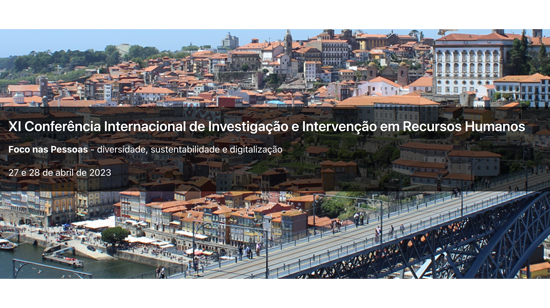Compressed Work Weeks – Intention Predictors and Outcomes: A Systematic Review Using Structural Topic Modeling
DOI:
https://doi.org/10.26537/iirh.vi11.5272Palavras-chave:
flexible work arrangements, compressed work weeks, intention predictors, structural topic modelling, outcomesResumo
As a way to conciliate work and family lives, organizations are providing flexible work arrangements (FWAs) to their employees (Allen et al., 2012). These FWAs allow individuals some control on defining where and when to work outside of a traditional work schedule (Spreitzer et al., 2017). One of the strategies encompassed in the FWAs are the compressed work weeks (CWWs), in which the schedule is reduced to three or four working days (Baltes et al., 1999). However, previous research has found inconclusive results when addressing both the intention predictors and the outcomes from adopting CWWs.
Given this, our study aims to provide an overview on the current state of the art regarding the intention predictors and outcomes (both at the individual and organizational level) from CWWs. Additionally, using a structural topic modelling (STM) technique, it also analyzes the latent topics arising from a range of research papers on CWWs. Finally, we also identify implications for HRM. To the best of our knowledge, few to none studies have been conducted in Portugal addressing the theme of CWWs.
Our systematic review was conducted through the use of statistical text analysis methods (Sharma et al., 2021) and following the guidelines from the PRISMA statement (Page et al., 2021). Firstly, seven different queries were created, in which the research topic could be either – “flexible work*”, “alternative work*”, “nonstandard work*”, “compress* work”, “shorter work*”, “four-day work*” or “4-day work*” and “family-friendly work*”. Then, we only considered English-written articles or reviews published in peer-reviewed journals. Data was retrieved from Web of Science (WoS), from which we initially obtained 1421 papers. After removing duplicates, we screened each article’s abstract and methodology sections, to analyze if they were either testing the intention to adopt or the real use of CWWs. Thus, 1289 papers were excluded, resulting in a final corpus of 132. We preprocessed the text data from our final corpus, by removing in-text citations, tables, figures, copyright information, equations and special characters. The topic modeling analysis was conducted using R software. The topic modelling technique used in this study allowed us to identify the latent topics regarding CWWs, as well as their prevalence across a range of documents (Bai et al., 2021).
Our results provided a clearer overview on the current state of the art on the intention predictors and outcomes of CWWs. With regard to intention predictors, we stated the existence of multiple ones predicting the willingness to adopt a CWW (e.g., being women or perceiving a decrease in commuting time). Moreover, our analysis also showed that outcomes from the CWWs’ use are dependent on the adopted form and the number of daily working hours. Thus, working under a “4/40” form (a four-day work week with 10 working hours each day) may produce different outcomes comparing to a “3/36” (a three-day work week where each workday has 12 hours). Further, we identified 15 topics and grouped them into 8 main clusters. Hence, these clusters were related to: 1) time and distance (number of daily working hours and commuting time and distance), 2) health and stress, 3) the work-family dynamic (work-life balance and role conflict management), 4) gender, parenthood and supervisory support, 5) talent retention, 6) shift work (fatigue and sleepiness), 7) qualitative research and 8) research reviews.
A possible limitation of this study is that we only used data retrieved from one database (WoS) and have not compared it with other sources (e.g., Google Scholar).
We believe our study goes in line with some of the interest areas from this conference, as we address one form of FWAs (i.e., CWWs) that has the potential to change the world of work and bring new challenges to both individuals and organizations.
Downloads
Publicado
Como Citar
Edição
Secção
Licença

Este trabalho encontra-se publicado com a Licença Internacional Creative Commons Atribuição-NãoComercial-SemDerivações 4.0.


